On my 39th visit to Gettysburg, my wife and I had the privilege of taking Aishwarya who is a software engineer and an aspiring poet (she goes by Ash for short). This was an emergency trip, as she is slated to move back to India in a month after living in the States for 5 years and never visiting Gettysburg. Clearly, something we needed to remedy!
During our 2 hr 15 min drive from Philly, we discussed everything leading up to the Civil War, my typical approach for contextualizing the war. She was educated in India, so she was a blank slate. There were several aspects of this slice of American history that surprised her. First, she never realized Lincoln was a Republican (shame on all of us!). Second, the 3/5ths Compromise was a shocking concept and evoked memories of the “untouchables” from Indian history, as a means of dehumanizing a group of people.
Battlefield Summary
I am happy to report that this was a successful trek-heavy trip with 0 casualties.
Time on battlefield: 8 hrs 21 min
Stops: 8
Distance walked: 6+ miles
Cigars smoked: 4
Ticks: 0
Casualties: 0
Stop 1: McPherson Ridge
We started on McPherson Ridge to discuss the lead up to the battle, the herculean efforts of John Buford, and the seemingly accidental start of the battle. When recounting the plight of Buford on June 30 and June 1, Eric J. Wittenberg’s rich narrative in The Devil’s to Pay (2015) provides superb context and anecdotes. I read through the first 6 chapters the day before in preparation.
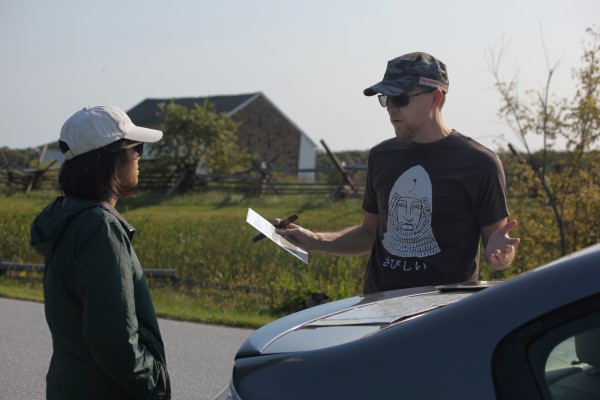
From there, we walked to John Burn’s statue, a man who sells himself—a 69-year-old Gettysburg citizen who took up arms against the invading Confederates and was wounded 3 times. He was made an honorary member of the Iron Brigade and even met President Lincoln later that year. True grit.
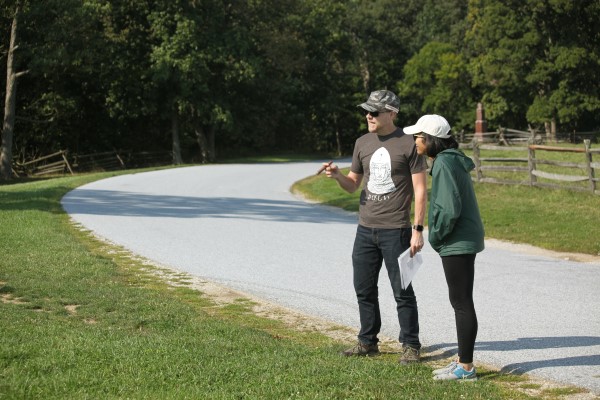
We headed south to the spot where General John F. Reynolds was shot. The story of his near command of the Army of the Potomac is remarkably relevant today. How many times have we argued over what level of control civilians and generals should have over our military?
Looking east, we saw where the location of the infamous Harvest of Death photo was taken, a location we know thanks to the tireless work of John Cummings.
Heading back north, we cut through the woods to Willoughby Run, a name which Ash just adored.
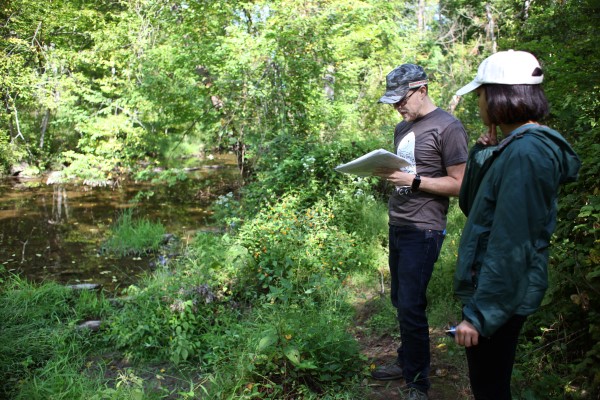

Then we hoofed it over to Chambersburg Pike to admire the statues of John Buford and John F. Reynolds.
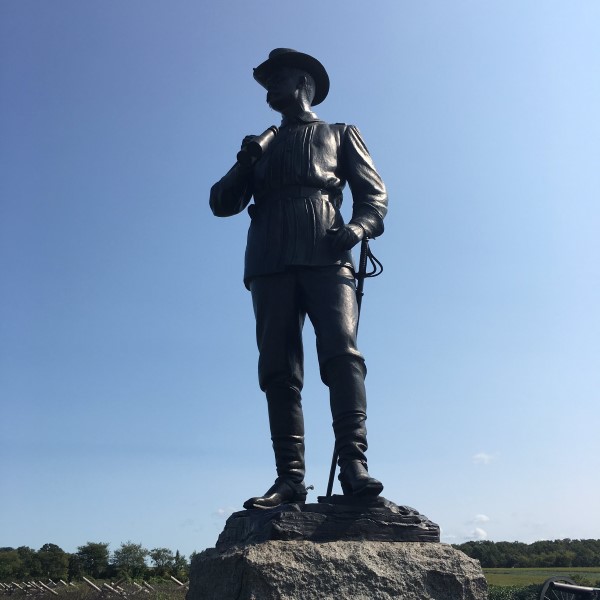
Ash was heartbroken to learn that Buford ultimately died of typhoid later that year. Buford was 37 years old, just like me.
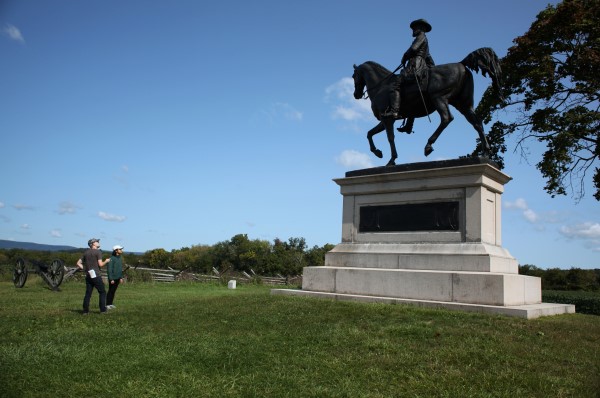
Just a reminder for all you Philadelphians that you can find John F. Reynolds in front of Philadelphia City Hall.
Stops 2: Eternal Light Peace Memorial
At the Eternal Light Peace Memorial, I walked through some of the US presidents who had visited the battlefield, especially FDR and JFK, reading some of the former’s speech from 1938. It’s fun to point to a spot and say “and that’s where JFK was driving his car.”
Stop 3: Cemetery Hill
On Cemetery Hill, we wrapped up the events of day one, got a better look at the hills and ridges south of the town, and discussed why General Richard Ewell opted not to attack the Union positions there. Some things just aren’t “practicable.”
Stop 4: Jaime’s Place
On the northeast side of Little Round Top, there had been a seasonally-open BBQ joint. At some point, it appears to have come under new management and became Jaime’s Place. While their menu is different, they were very responsive about their hours on Facebook and they had quick service. I had a burger, which was fresh and perfect for an afternoon of trekking. The fries were crisp to perfection.
Stops 5 and 6: Sedgewick Ave and the Peach Orchard
My favorite spot on Gettysburg is of course Sedgewick Ave, as you get to see the view of a confused General Daniel Sickles, which set in motion the series of events that made Day 2 of Gettysburg such a fascinating story. Ash later said she’d remember “Sickles the Pickler” forever, referring to the pickling of his severed leg for preservation.
Stop 7: Devil’s Den, Little Round Top
On top of Devil’s Den, we got one of the classic views of the battlefield, as we lit up some cigars.
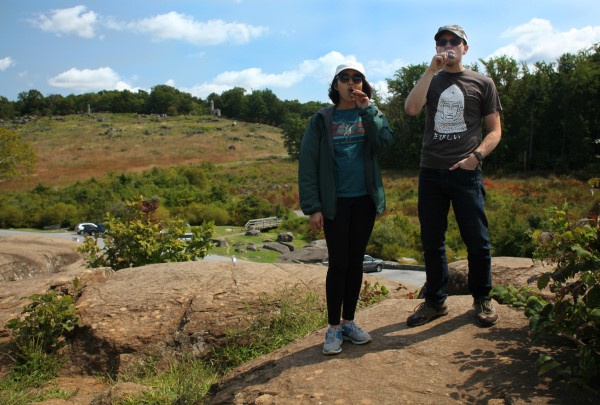
From there, we hiked up Little Round Top, which was incredibly overgrown until we got to the top.
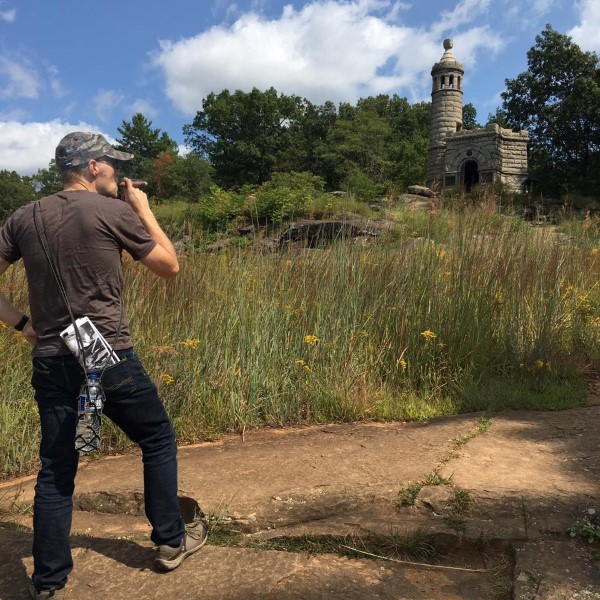
At the top, we recounted the quick succession of casualties among Union officers before heading to the south where the 20th Maine made their stand, which has risen to mythical status.
Throughout the trip, I carried photos of US Presidents at Gettysburg. It’s fun to walk up to a stranger and say, “Hey, you’re standing where Kennedy and Jackie O’ stood!” People just light up with excitement.
We took our own opportunity to try to recreate a shot of JFK on Little Round Top.
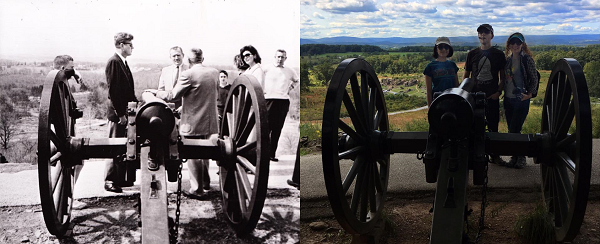
Stop 8: Seminary Ridge, Pickett’s Charge, Gettysburg Address
On our final stop and walk, we recounted the momentous cannonade from the Confederate perspective. From there, we trekked to the Bloody Angle to recount it all from the Union perspective. Ash described this artillery duel as her favorite part.

Along that strip, I introduced Ash to the handiwork of John Badger Bachelder, a name she was convinced I made up and one that she’d never forget.
Then we made it to the national cemetery and the spot of Lincoln’s Gettysburg Address. I recounted the famous story of the sole photo we have of Lincoln, as well as President Jimmy Carter bringing Egyptian President Anwar Sadat and Israeli Prime Minister Menachem Begin to Gettysburg in the middle of the Camp David Accords (1978). While Sadat was enamored with all the military tactics and strategy, Begin remained mostly silent until they reached this spot. There, he recited the Gettysburg Address from memory; I recited it using a cheat sheet.
Afterward, Ash said she appreciated the amount of walking we did and she wants to go again. If that’s not the measure of a successful Gettysburg trip, then I don’t know what is.
Disclaimer: I am not a Licensed Battlefield Guide, which means I do this not only for fun, but free for my coworkers, friends, and family. If you fit into that criteria, I’d be happy to take you on a trip. Otherwise, hire a professional.
